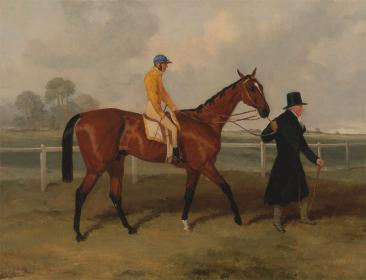I feel that the reins in both hands is more secure. That said, if I have confidence in the horse, the area is very calm and the trip short, then you are safe leading with the reins over the neck. I think it really depends on how confident the handler is, and how jumpy the horse is, and how good the handler is at reading signs the horse is getting “up.”
I don’t think having the reins over the neck will cause the horse to panic and rear. Think about all the times the rider falls off the horse and the horse goes for a rip roaring full out gallop around the cross country field or the indoor arena or down the trail with the reins over his neck, basically just like if the rider was riding “on the buckle.” The reins do not constrain the horse with or without a rider, and they are less likely to get stepped on, break, or trip the horse, if they are over the neck and the horse is running free.
I expect that your friend thinks you horse is completely safe, your facility is completely safe, and that she would notice if the horse was at all “up” and adjust her behavior accordingly. She may feel that the horse is basically just following her, and if she let go entirely he’d give her no problems.
Honestly, if that’s the worst problem with her riding your horse, I would let it go.
Also when you are teaching the students to lead, make sure that they know to lead on loose rein. I see a lot of kids come out of lesson programs keeping a super tight grip on halter or bit when leading, constraining the horse’s head. They need to let the lead rope or reins out a foot or so, and have the horse walk correctly on a draped line. That way they are not pulling the horse on top of them in case of a spook, and they are not bothering the horse’s mouth.

